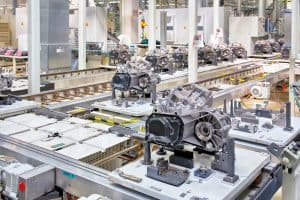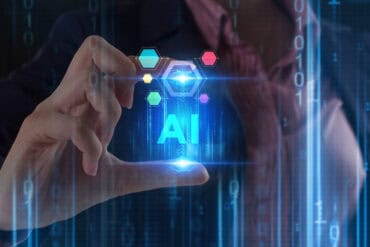
The power of digital twin technology is amplified when models for discrete devices are combined into a system-level view of operations.
The wide-scale adoption of Industrial IoT (IIoT) is spurring interest in digital twin technology. IIoT brings together connected intelligent devices and analytics in a way that allows organizations to monitor, collect, exchange, analyze, and deliver valuable new insights about their systems and processes. These insights can help drive smarter, faster business decisions.
When a physical system is paired with a digital representation, the derived insights can bring additional benefits to manufacturers in different aspects of their operations, covering aspects ranging from smart manufacturing to supply chain optimization to product or service innovations.
Interest in digital twin technology is booming across many industries. The market, valued at $3.1 billion in 2020, is expected to reach $48.2 billion by 2026, representing a compound annual growth rate (CAGR) of 58% from 2020 to 2026. Such growth is due to the anticipated usage of digital twins for design, simulation, MRO (maintenance, repair, and overhaul), production, and after service, according to MarketsandMarkets. Industrial companies are expected to experience high growth in digital twin solutions as they emerge from the pandemic. Many are adopting such solutions for their end-to-end operations to minimize losses due to the pandemic.
Wide-ranging industrial digital twin applications areas
A digital twin model uses data from IoT devices and other sensors to asset the state of the device or piece of equipment. The insights derived in these models can be used in several ways, including:
Operational twins: In many cases, equipment problems are due to incorrect usage. For example, a device might be operating out of its normal temperature or pressure range, or it might be running at a higher speed than recommended. If unaddressed, the issue can impact the device itself, perhaps leading to an unexpected breakdown or aggressive deterioration. Using a digital twin of the part, data analysis of a device’s current state might help identify such out-of-specification operation conditions. Simulations could help explore whether pushing a device’s performance or running it in its current environment is okay. If not, changes could be made to optimize the device’s current performance in a working environment.
Predictive twin: A digital twin can be used to do what-if analysis. For example, a manufacturer might look at trade-offs: If I increase the speed, a device operates at, what is the immediate improvement in output. And then, use the same simulation to figure out the impact of that speed increase on the equipment. Would it need more frequent service? Would it fail faster? A cost analysis could then be done comparing the net revenue increase in a production boost by running the device at a higher rate versus the increased cost of maintaining the equipment or replacing it more frequently.
Loopback to product design and marketing: A product design team might use data collected about the equipment used in the field to improve or tweak the product or add new features based on its current use. Does it perform better than expected? Perhaps, a more economically designed version would suffice. Similarly, it may turn out that a device in certain environments outperforms stated specifications. Marketing and sales might share that information with other customers in the same environments.
Connected digital twins: The power of digital twin technology is amplified when models for discrete devices are combined into a system-level view of operations. For example, in aviation, a manufacturer might have individual digital twin representatives of different engine components and a model that lets them simulate and observe how these elements work together. Smart buildings frequently use combinations of smart spaces, smart elevators, smart HVAC systems, and more to derive synergistic benefits when a developer or building owner can understand how these systems can complement each other and work together.
System-level models and twins
Connected digital twins in manufacturing could take two paths. One would be to focus on how a complex piece of equipment operates by integrating models of the parts that comprise the system. Such a model is the equivalent to an aircraft engine manufacture simulating an entire engine from models of its parts.
Manufacturers can gather real-time insights from within systems-of-systems to make it easier for engineers to find hidden inter-dependencies and recommend steps to recalibrate the equipment. The insights derived about how the equipment operates in its actual environment could be used by engineers and maintenance teams to make adjustments and optimize the equipment’s performance.
Another area of attention is simulating and modeling manufacturing processes where twins are created for different equipment used on a production line. For example, a complex assembly line might include a digital twin of robotics systems that place items on a conveyer belt, another for a mill, yet another for a welding tool, and more.
A composite digital twin with these elements would let a manufacturer get deeper insights into the end-to-end processes. Adjustments could be made in the virtual model to see what impact the changes would have on the finished product, production rates, quality, and more.
On the path to Industry 4.0
Connectivity technologies and the data collected are essential for an equipment or device manufacturer to participate in future industry initiatives such as Industry 4.0. Smart manufacturing initiatives can combine factory visibility, predictive maintenance, modeling, and simulations to get real-time insights into how equipment is operating now, how its operations can be improved, and how it impacts end-to-end key performance indicators.






